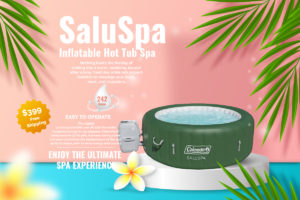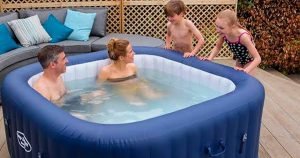Hot Tub pH Levels Overview
Balancing the pH of your hot tub water is one of the most critical things you can do to care for it. Your hot tub’s pH level is a measure of how acidic (low pH) or alkaline (high pH) the water is — either can play into your comfort, water quality and the operational life of your spa equipment.
A good pH balance allows your sanitizer to work effectively, provides for comfortable soaking, reduces corrosion and scaling while helping to prolong the life of your hot tub shell, heater, pumps and filters.
Ideal pH Range for Hot Tubs
The pH scale goes from 0 to 14; 7 represents a neutral pH. For hot tubs, the optimum pH level is between 7.2 and 7.6 — just above neutral and close to human skin’s natural pH.
This is what helps keep your pH:
- Prevent skin and eye irritation
- Maximize sanitizer efficiency
- Minimize unpleasant odors
- Insulates and protects your hot tub components from damage
Effects of Low and High pH Values
Low pH (Below 7.2)
When the water gets too acidic:
- You will smell a lot of chlorine if you then get in the shower
- Chlorine dissipates faster, reducing sanitization
- Skin and eyes become irritated
- Alternatively, metal parts can take a corrosive hit which will cost you down the road.
High pH (Above 7.6)
When the water is too alkaline:
- You can feel the ammonia or urine-type scents
- The water can appear cloudy
- Then sanitizers such as chlorine or bromine lose their efficacy
- Surfaces and equipment can be coated with scale and mineral deposits
Test the pH Level of Your Hot Tub (2025 Ways)
Nowadays, testing kits are available that make it easy and fast to check the sediment levels in your water. You can choose from:
- Digital water testers (quick and precise)
- Test strips (affordable and easy)
- Liquid testing kits (accurate, good for anyone who tests regularly)
Pro tip: Be sure to take a small water sample and allow it to cool for 3–5 minutes before testing. You can have inaccurate test readings when you test hot water.
Balancing Alkalinity Before Adjusting pH
Before you attempt to change your pH, test your total alkalinity (TA).
The right alkalinity — 80 to 120 ppm — helps keep your pH from going on a roller coaster.
If your alkalinity is wrong, apply an alkalinity increaser or decreaser to fix it first. After the TA is in balance, correct the pH with:
- pH Increaser (sodium carbonate or soda ash) — used to RAISE pH
- pH Decreaser (sodium bisulfate) – will decrease the pH
Be sure to follow the directions on the product label precisely. Allow your circulation system to run for 1–2 hours (or overnight) after adding chemicals before retesting.
2025 Hacks of How to Get the Perfect Hot Tub pH Balance
✅ Keep pH between 7.2–7.6
💧 Keep alkalinity 80–120 ppm
🧪 Adjust alkalinity before pH – ALWAYS
🌡️ Allow water to cool before testing for correct results
🔁 Retest 1–2 hours after chemical changes
🧼 Don’t use too many chemicals — high sanitizer levels can skew pH readings
📅 Check your water 2–3 times per week, especially after a heavy usage or rain
Conclusion
By keeping your hot tub pH and alkalinity in balance, you’ll have clearer water, longer equipment life, and a more enjoyable time soaking. Regular testing and some small adjustments will keep things doing their job to protect your investment and give you a better soak.
No matter if you use chlorine, bromine or salt water systems — Balance is key to a clean, clear and healthy hot tub.





